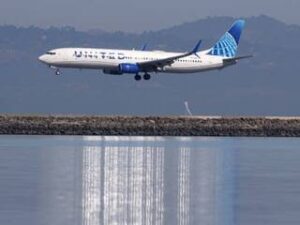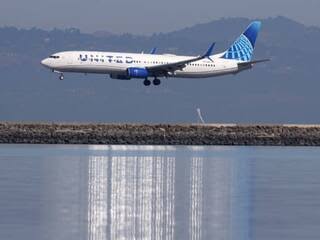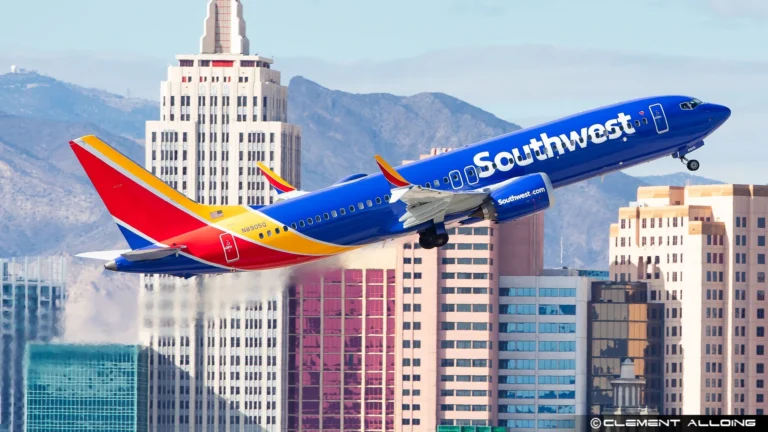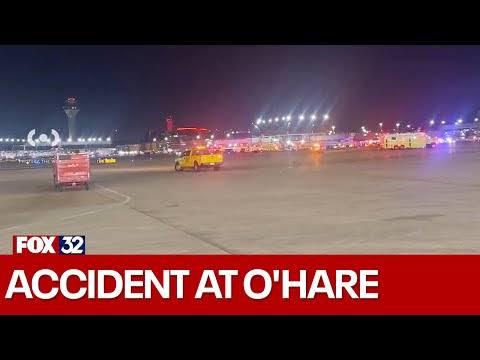A United Airlines flight took a steep dive to just 800 feet above the Pacific Ocean
Near-Disaster Over the Pacific: United Airlines Flight’s Terrifying Plunge
A Harrowing Plunge That Shocked the Aviation World
Passengers aboard a United Airlines flight recently experienced a terrifying moment when their aircraft suddenly plummeted to just 800 feet above the Pacific Ocean before recovering. The near-disaster left travelers shaken and has since sparked investigations into what caused the steep dive. The incident, which occurred shortly after takeoff, highlights the complexity and risks of modern aviation while reinforcing the importance of rigorous safety measures.
In this article, we will delve into the details of the event, potential causes, safety protocols, and what this means for air travel moving forward.

The Incident: A Sudden Drop Towards the Ocean
The flight in question took off from Hawaii, destined for San Francisco. Shortly after departure, as the aircraft climbed to its cruising altitude, it unexpectedly entered a steep descent. Within seconds, the plane lost thousands of feet in altitude, bringing it dangerously close to the Pacific Ocean.
Passengers and crew onboard described the terrifying moment, saying it felt as if the aircraft was free-falling. Some screamed, while others gripped their seats in fear, bracing for what seemed like an impending crash. According to flight data, the aircraft dropped from approximately 2,200 feet to just 800 feet before the pilots managed to regain control and stabilize the situation.
United Airlines later confirmed the incident, stating that the flight landed safely at its intended destination. However, the brief but dramatic dive left many questions unanswered.
Investigating the Cause: Pilot Error or Mechanical Failure?
Aviation experts and investigators have been examining potential reasons behind the aircraft’s sudden drop. There are typically two primary causes for such an event:
Pilot Error – Human mistakes in the cockpit can lead to sudden altitude changes, especially if there is miscommunication between the pilot and co-pilot or an error in setting the autopilot.
Mechanical or System Failure – A malfunction in the aircraft’s flight control systems, autopilot, or sensors could cause a sudden drop in altitude.
Initial reports suggest that the pilots reacted quickly to the situation, which helped prevent a catastrophe. However, whether their actions contributed to the descent in the first place remains a key question in the investigation.

Understanding the Risks of Steep Descents
Steep descents are rare but extremely dangerous, especially at low altitudes. Several factors make them particularly hazardous:
Loss of Control: A rapid drop in altitude can disorient pilots and make it more challenging to regain stability.
Increased Airspeed: As the aircraft descends quickly, its speed can increase beyond safe operational limits, putting stress on the airframe.
Risk of Water Impact: With just 800 feet separating the plane from the ocean, there was very little room for error.
Given the seriousness of such an event, aviation experts are treating this incident as a close call that could have ended tragically.
What Happens During an Investigation?
When an incident like this occurs, multiple aviation authorities step in to analyze the situation. The Federal Aviation Administration (FAA) and the National Transportation Safety Board (NTSB) typically conduct thorough investigations.
Key Steps in the Investigation Process:
Flight Data Recorder (FDR) and Cockpit Voice Recorder (CVR) Analysis: These “black boxes” provide crucial information about what happened in the cockpit and the aircraft’s performance.
Pilot Interviews: Investigators interview the flight crew to understand their perspective and actions during the event.
Aircraft Inspection: A detailed examination of the aircraft’s mechanical systems and software is conducted.
Passenger and Crew Testimonies: Accounts from those on board can help piece together a timeline of events.
The final report could take months to complete, but preliminary findings may be released sooner.
Similar Incidents in Aviation History
While such steep descents are uncommon, they are not unprecedented. Here are a few notable cases:
1. Air Canada Flight 759 (2017)
An Air Canada flight nearly landed on a taxiway at San Francisco International Airport instead of the intended runway. The pilots, confused by runway lights, had to abort the landing at the last moment. This incident highlights how quickly aviation situations can become critical.
2. Qantas Flight 72 (2008)
A Qantas Airbus A330 experienced two sudden and uncommanded nose-down movements while flying over Western Australia due to a faulty air data sensor. The aircraft descended sharply, injuring several passengers and crew members.
3. Alaska Airlines Flight 261 (2000)
This tragic incident involved a loss of control due to a failure in the aircraft’s stabilizer trim system, causing the plane to plunge into the Pacific Ocean, killing all 88 people on board.
These past events underscore the importance of identifying the exact cause of the United Airlines flight’s rapid descent.
Pilot Training and Emergency Procedures
Commercial pilots undergo rigorous training to handle unexpected situations, including sudden altitude drops. They train for a variety of emergencies in flight simulators, where they practice:
Stall Recovery – Learning how to regain control when the aircraft loses lift.
Unusual Attitude Recovery – Training for unexpected aircraft positions, such as steep dives.
Autopilot Malfunctions – Understanding how to switch to manual control if the system fails.
In this case, the United Airlines pilots demonstrated their training by recovering from the dive, preventing a disaster. However, further analysis will determine if pilot error contributed to the incident.
Impact on United Airlines and Aviation Safety
This incident could have long-term consequences for United Airlines and the aviation industry.
Passenger Confidence: Some travelers may become wary of flying after hearing about this close call.
Policy Changes: The airline and aviation regulators may introduce new safety protocols or training procedures.
Aircraft Inspections: The specific model of aircraft involved in the incident may undergo additional checks to rule out mechanical issues.
While aviation remains one of the safest forms of travel, events like these serve as reminders of the importance of constant vigilance in the industry.
Passenger Reactions and the Psychological Impact
For passengers who experienced the drop firsthand, the psychological effects may linger. Some may develop a fear of flying, requiring therapy or counseling to overcome the trauma.
Flight crews are also affected by such incidents. While trained to handle emergencies, experiencing a near-disaster can be emotionally and professionally challenging.
Lessons Learned and Moving Forward
Every aviation incident provides an opportunity to enhance safety measures. Key takeaways from this event include:
The Importance of Quick Pilot Response: The pilots’ ability to stabilize the aircraft prevented a catastrophe.
The Need for Thorough Investigations: Understanding the root cause is essential to prevent future occurrences.
Passenger Awareness: Travelers should always follow safety instructions and remain calm during unexpected events.
While the United Airlines flight’s terrifying descent was a close call, it also highlights how well-trained pilots and robust safety systems work together to protect passengers. The aviation industry will undoubtedly learn from this incident to further enhance flight safety worldwide.
Final Thoughts
The United Airlines flight that came within 800 feet of the Pacific Ocean is a stark reminder of how quickly aviation situations can escalate. Thanks to the pilots’ quick response, disaster was averted, but the incident raises important questions about what went wrong and how similar events can be prevented.
As investigations continue, passengers can take comfort in knowing that aviation authorities and airlines prioritize safety above all else. While this flight may have been a frightening experience, it serves as a testament to the skill of pilots and the resilience of modern aircraft systems.
Air travel remains incredibly safe, but this event reinforces the need for continuous vigilance, training, and improvements in aviation technology to ensure that such terrifying moments become even rarer in the future.






